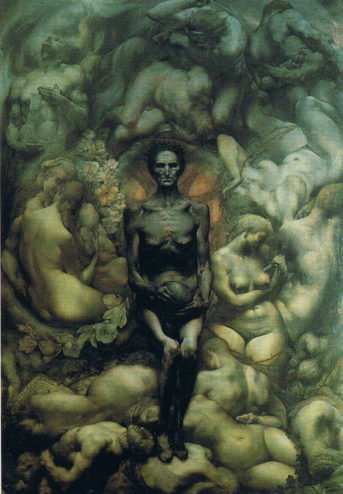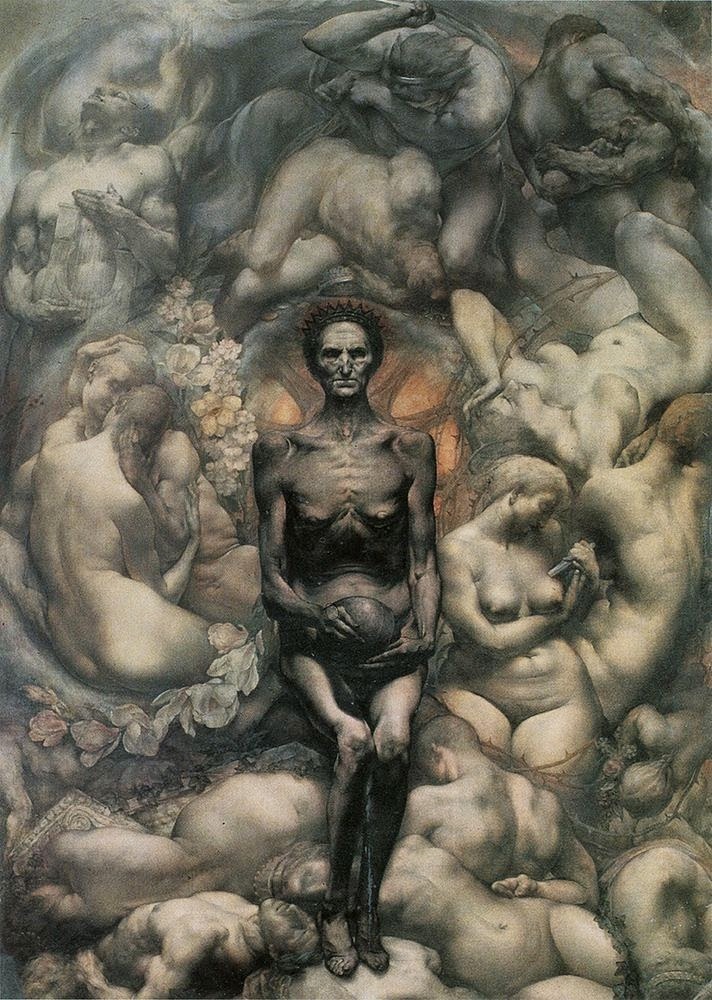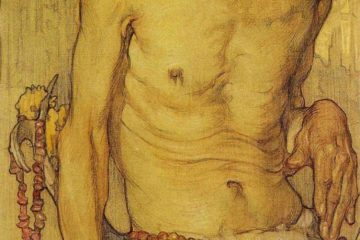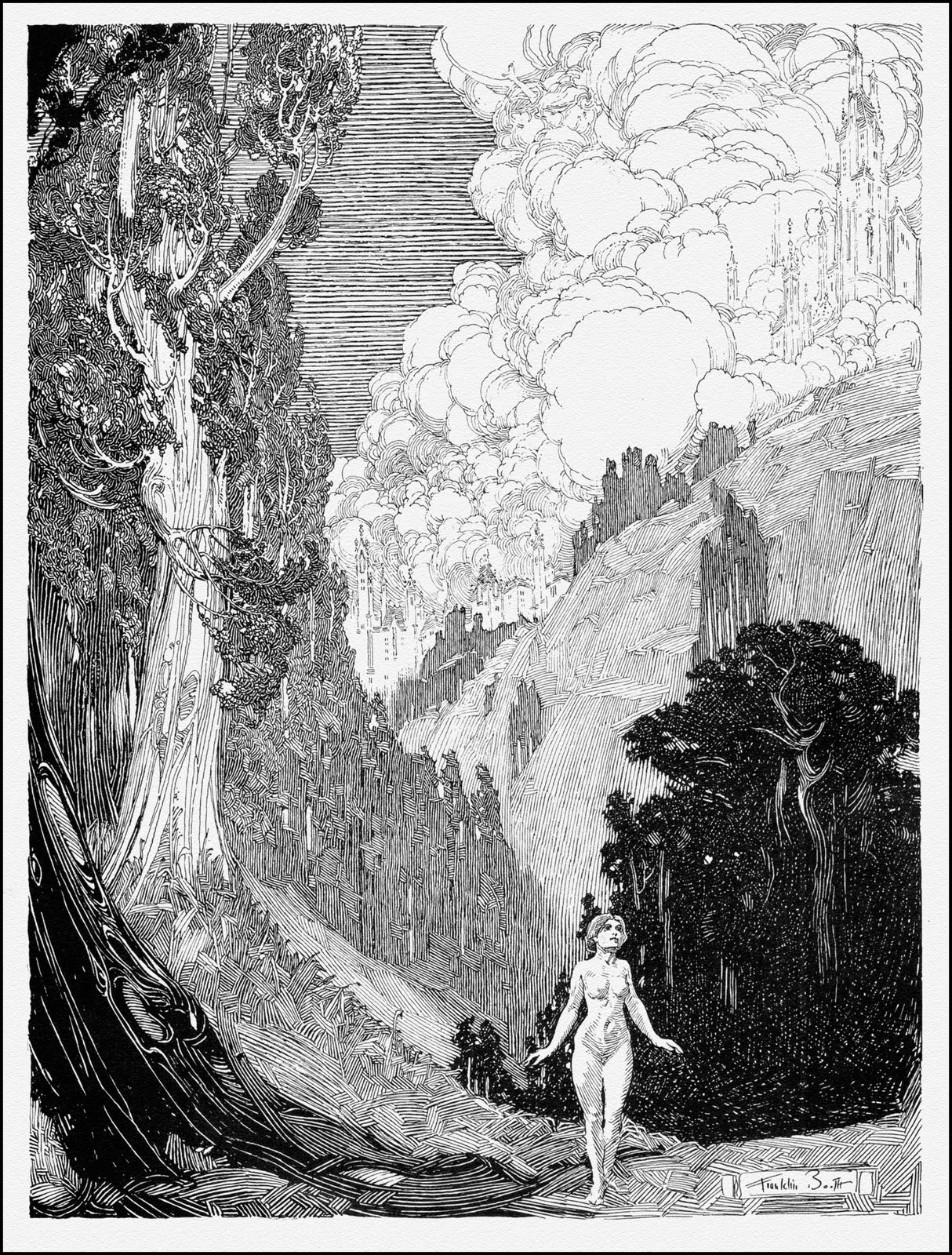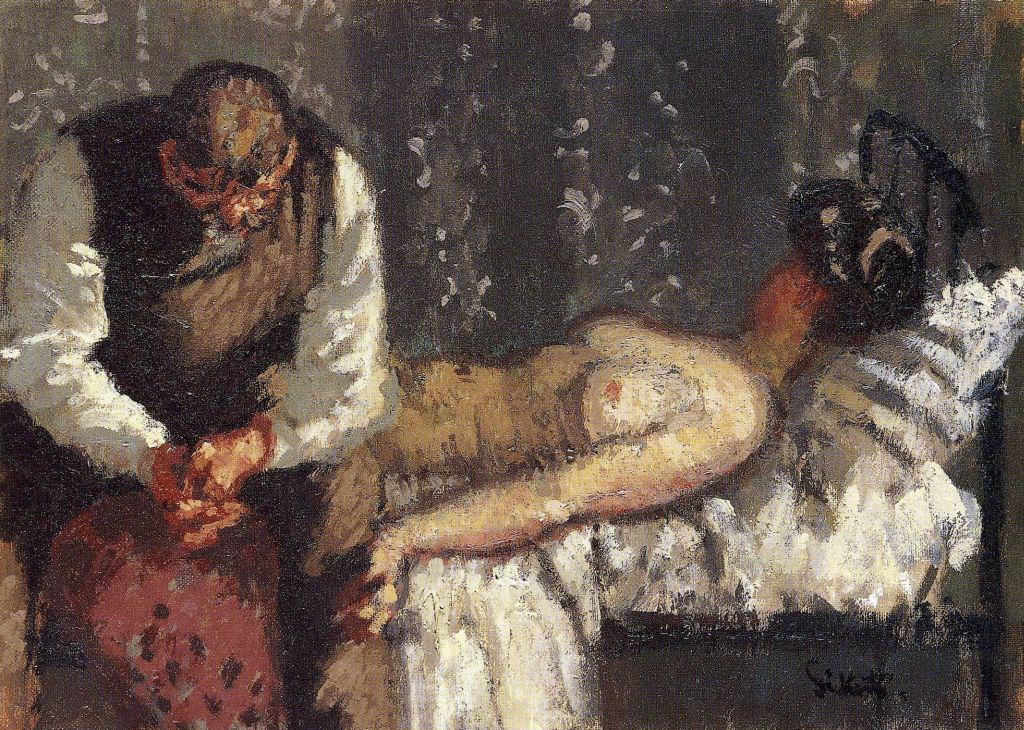So, this is one of those Levêque pieces that I used to come across online all the time, which may or may not be the right color. Many of the versions look like the bottom image below, but quite a few have the green tint of this top one.
It’s a great argument for seeing a piece of art in a museum (I talked about that here previously), but I just don’t have that option. So, here we are. I think, though, that I’ll talk about the bottom version mostly, since I’m probably going to talk more about the content anyway.
Which is perfectly fine, because Levêque was really hitting all manner of emotions with this piece.
You’ve probably guessed by the “fates” part of the title that this painting covers the same thing that Stephen King’s Insomnia* covered. In case you started that a couple of decades ago, and are still just halfway through, both creations talk about the mythological fates that control our destinies.
In this case, from what I have been able to research (see the sites below), Levêque painted the Roman versions of the fates, the Parcae. Rather, while I think he captured the essence of the Parcae, what he really captured here was existence itself. This is the spectacle of fate, on hand to show life and death in action.
We have love, anger and fighting, music, even suicide. All around the edges, Levêque painted characters in softer and lighter tones and in various shades of life, death, and nudity. Levêque centers the piece with a different approach, a much harsher and more contrasted vision of the ultimate fate. Morta, the one who finally cuts the thread of life, sits with high command among the rest, powerful in both character and technique.
It is in this technique that Levêque succeeds the most. Morta has far more contrast than any other, and seems to jump right out of the painting. Yet, there’s no sense that she doesn’t belong. She is above all, and yet within as well, and Levêque is able to use composition, contrast, and color to bring her to the forefront of the image.
Even with murder, suicide, and the actions of those around her, she is clearly the most powerful one here and belongs at the front. Levêque painted the fate of each person hovering around the final end, linked both directly and indirectly to the final fate we all share.
*I did finally finish Insomnia. But man, did it need the middle third cut out.
Here’s a slightly larger version.
See previous editions and subscribe to new articles here.
References
La Parque (The Fates)
Auguste Levêque
1900, Oil on canvas, 295cm × 204cm
Tournai, Musée des Beaux-Arts
https://en.wikipedia.org/wiki/Parcae
http://thecorpsedrivers.coolbb.net/t533-auguste-leveque-la-parque
https://theartstack.com/artist/auguste-leveque/la-parque-1900
